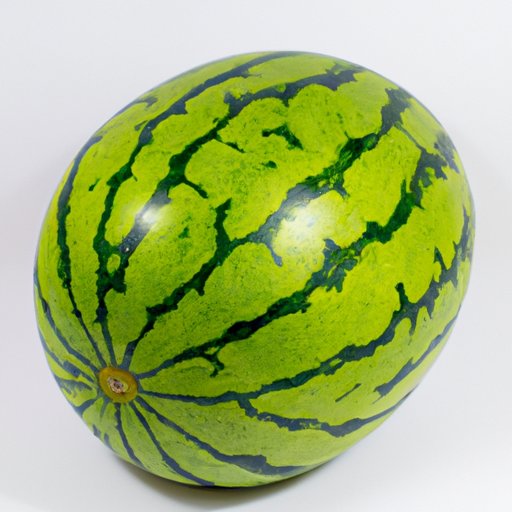
Introduction
Watermelons are a refreshing and delicious fruit that are a staple during the summer months. Nothing beats biting into a sweet, juicy slice of watermelon on a warm day. However, choosing the right watermelon can be difficult. It’s often hard to determine which ones are ripe and which ones are not. In this article, we will provide some useful tips to help you pick the best watermelon for that summer BBQ or family picnic.
Look for a Uniform Shape
When looking for a ripe and sweet watermelon, start by examining its shape. You want to look for a watermelon that is uniformly shaped, meaning that it should not have any lumps or uneven areas. This is an indication that the watermelon has received consistent amounts of water and nutrients while growing.
It’s also important to check for dents and defects. If your watermelon has any dents or bruises, it may have been damaged during the growing process or during transportation. A damaged watermelon may not be ripe and could be dry or tasteless.
Check the Field Spot
The field spot is where the watermelon has been sitting on the ground and getting nutrients and water. This spot should be a creamy yellow color, and it should be slightly indented when you run your hands over it. A white or green field spot means that the watermelon is not ripe. A field spot that is too dark or even black could indicate that the watermelon is overripe and too soft inside.
Tap It
Tapping is a popular way to check if your watermelon is ripe. When you tap on the watermelon, you should hear a hollow sound. If the sound is dull or thud-like, then the watermelon is likely underripe or overripe.
To properly tap a watermelon, use your knuckles and gently tap several spots on the watermelon. Make sure to tap on the ends, as well as the middle. If you hear a hollow sound when tapping, the watermelon is likely ripe.
Check its Weight
A ripe watermelon is usually heavy for its size. When you lift the watermelon, it should feel dense and full. If it feels too light, it could indicate that it’s not ripe or has been sitting on the vine for too long.
To properly lift and hold a watermelon, use both hands and hold the watermelon up to your ears. The heavier it is, the more likely it is ripe.
Look for Webbing
Webbing is the brown, web-like lines on the watermelon skin. This is an indicator of sweetness and it relates to pollination. The more pollination a watermelon receives, the more webbing it will have.
When picking a watermelon, look for one with a good amount of webbing. If you don’t see any webbing, the watermelon may not be ripe or sweet.
Give it a Thump
Thumping a watermelon is another way to determine if it’s ripe. When you thump the watermelon with the palm of your hand, you should hear a deep, hollow sound. If the sound is flat or dull, it’s likely that the watermelon is not ripe.
To properly thump a watermelon, make a fist and knock on the watermelon in several places. Listen for the sound it makes and pick the one with the deepest, most hollow sound.
Look for a ‘Sugar Spot’
The sugar spot is a small, circular spot on the watermelon. This spot is where the sun hits the watermelon the most, causing it to be sweeter than the rest of the fruit. The sugar spot should be creamy yellow in color.
When picking a watermelon, look for one with a prominent sugar spot. This is a good indication that the watermelon is ripe and sweet.
Conclusion
Picking a sweet watermelon can be a bit of a challenge, but by following these simple tips, you should be able to find the perfect watermelon every time. Look for a uniform shape, check the field spot, tap it, check its weight, look for webbing, give it a thump, and find the sugar spot. By putting these tips into practice, you’re sure to impress your friends and family with juicy, sweet watermelon all summer long.




